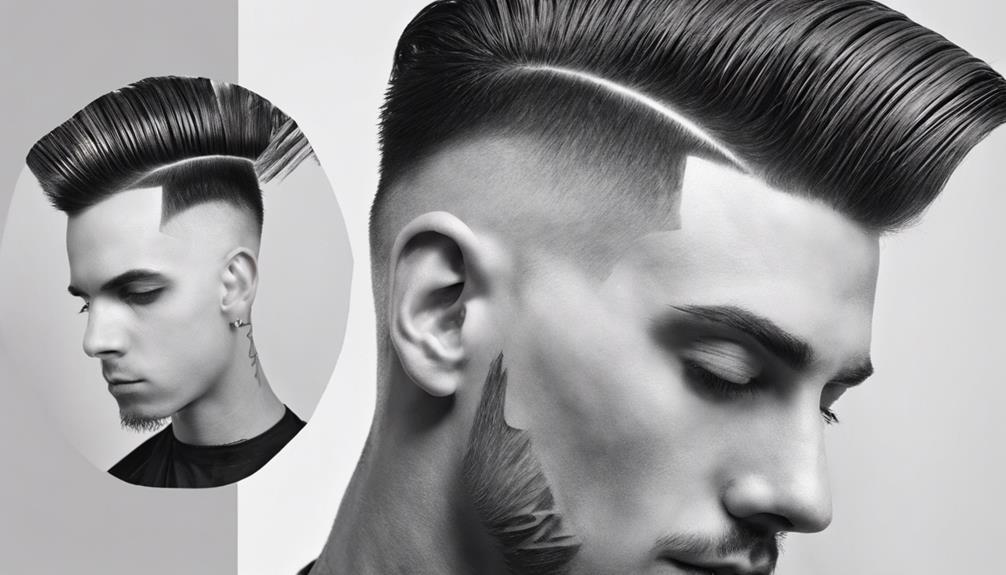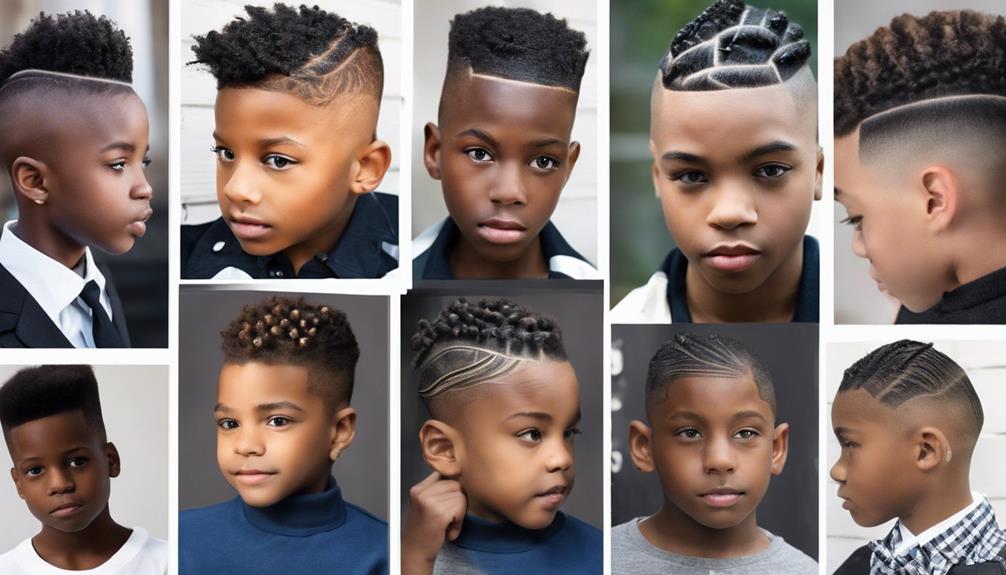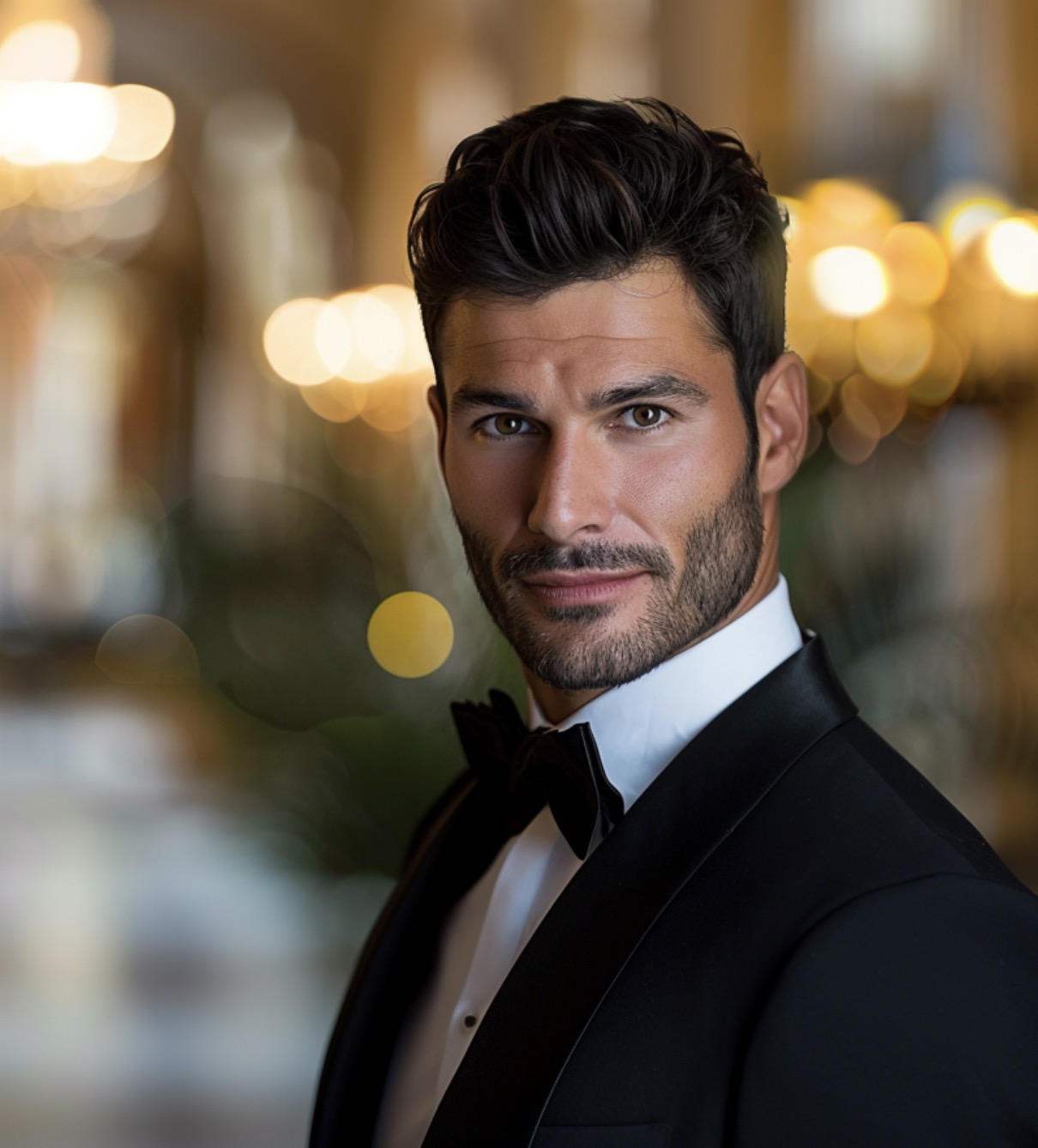Let’s explore the precision and innovation needed to thrive in the skill of hair cutting. Understanding fundamental principles like layering and point cutting is essential for adding dimension and texture to hairstyles. Elevate your skills with precise clipper techniques, such as using a 1.5 clipper guard and staying close to the hairline for a polished result. Sophisticated shaping techniques tailored to the individual’s head shape and hair growth pattern, along with seamless blending methods like point cutting and slide cutting, guarantee a seamless look.
Finish strong with styling tips for the perfect aesthetic. Find out more about mastering the art of hair cut design.
Key Takeaways
- Master foundational principles like layering and point cutting for texture and dimension.
- Utilize precision clipper techniques with proper guards and wetting hair down for clean lines.
- Employ expert shaping methods considering head shape and tools like shears for personalized designs.
- Implement seamless blending strategies such as point cutting and slide cutting for smooth transitions.
- Finish with styling tips using quality products and sculpting techniques for a professional look.
Hair Cut Design Fundamentals
Mastering the foundational principles of hair cut design is essential for aspiring hairstylists to create precision and artistry in their craft. Layering adds dimension and texture to hairstyles, giving them movement and volume. By strategically removing weight from specific sections of the hair, layering allows for versatility in styling and enhances the overall shape of the haircut. Point cutting is another fundamental technique that involves cutting the hair at an angle, rather than straight across, to create softness and texture. This method is particularly useful for blending different lengths seamlessly and adding a more natural finish to the haircut.
Understanding the impact of elevation, over-direction, and finger angle is vital in mastering these techniques. Elevation controls how high or low the hair is held and cut, influencing the layers' length and graduation. Over-direction affects where the hair falls and how it flows, while finger angle determines the depth and shape of the cut. These fundamentals lay the groundwork for more advanced and innovative hair cut designs, enabling stylists to release their creativity and deliver exceptional results.
Precision Clipper Techniques
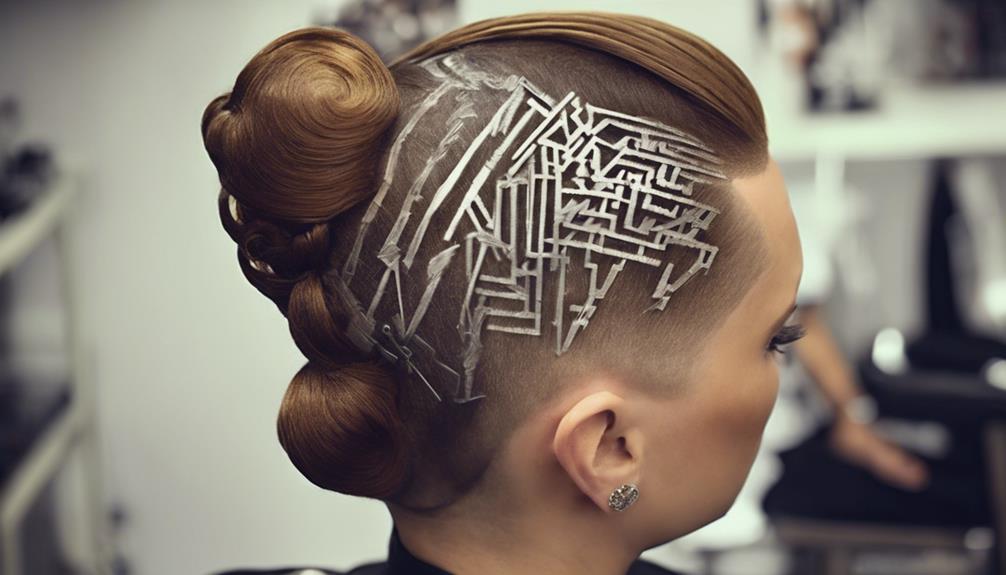
Layering the foundation of hair cut design, we now turn our focus to Precision Clipper Techniques. When it comes to hair cutting, utilizing the right tools and techniques is vital for achieving impeccable results. To start, using a 1.5 clipper guard can help create clean lines on the sides without tapering the back, ensuring a sharp and defined look.
Before diving into the cutting process, wetting the hair down is necessary to organize it effectively. Sectioning the hair allows for better visibility and control over the cutting process. Elevating the clippers while cutting helps maintain length on the top, ensuring consistency throughout the haircut.
To achieve a polished finish, staying close to the hairline is crucial. Begin by creating a straight line in the back for a clean look. For precision and refinement, consider utilizing the scissor over comb technique for bulk removal and adding detailed touches to the cut. Mastering these precision clipper techniques is essential for elevating your hair-cutting skills to the next level.
Expert Shaping Methods
When perfecting hair design, expert shaping methods play a pivotal role in achieving seamless and personalized haircut designs. Cutting hair is truly an art, and mastering shaping techniques is essential for creating precise lines and angles that result in a flawless shape. Understanding the nuances of head shape and hair growth patterns is vital in executing expert shaping methods effectively. Different tools such as shears, clippers, and trimmers are utilized to achieve the desired shapes with precision and accuracy.
Expert shaping goes beyond just cutting hair; it involves seamlessly blending different lengths to create a harmonious and well-balanced look. This meticulous process allows for the customization and personalization of haircut designs, ensuring that each client receives a tailored and unique style that complements their features. By mastering expert shaping methods, hair professionals can elevate their craft and deliver exceptional results that showcase their artistry and attention to detail.
Seamless Blending Strategies
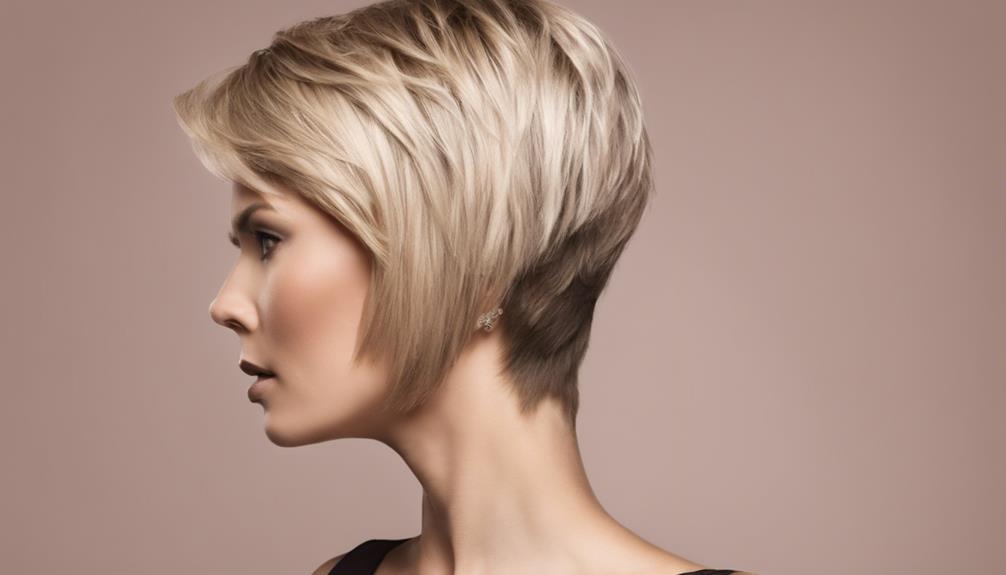
To achieve smooth blending in haircut designs, hair stylists utilize various cutting techniques that guarantee a seamless shift between different lengths and layers. These methods not only guarantee a flawless shift but also add dimension and style to the hair:
- Point Cutting: By using the point cutting technique, stylists can create a soft shift between various hair lengths, particularly useful for blending layers in a pixie cut seamlessly.
- Slide Cutting: Incorporating slide cutting helps in removing weight and effortlessly blending layers, resulting in a natural look that's essential for achieving a smooth finish.
- Razor Cutting: Utilizing razor cutting techniques can provide a feathered effect, smoothly blending layers and adding texture to the hair, perfect for creating dimension in the overall look.
Styling Tips for the Perfect Finish
As we finesse the haircut design, our focus shifts to the meticulous styling tips that bring about the perfect finish, elevating the overall look with precision and flair.
When styling short hair with a blunt cut, using the right products is pivotal. Opt for pomade or other styling products to sculpt the hair into the desired shape and secure the style in place. For a balanced look, maintain the top hair slightly longer at the widest point of the head, avoiding following the natural head shape to prevent a rounded haircut appearance.
Quality styling products play a vital role in achieving a polished and professional finish, enhancing the overall aesthetic of the haircut. By providing guidance to clients on post-cut maintenance and answering any questions they may have, you secure a satisfactory and professional experience. Remember, attention to detail and using the right techniques are essential in making blunt, short hair look its best.
Frequently Asked Questions
What Is the Degree for Cutting Hair?
When cutting hair, the degree refers to the angle at which the hair is cut in relation to the head. Common cutting angles include 0 degrees for a blunt cut, 45 degrees for layering, and 90 degrees for uniform layers.
Understanding cutting angles is essential for creating specific shapes and styles in haircuts. Different angles affect how the hair falls and moves, influencing the overall hairstyle.
Precision in cutting angles is key for achieving desired textures, layers, and dimensions.
What Are the 5 Basic Haircuts?
Rest assured, you have access to the 5 basic haircuts.
The Blunt cut establishes crisp lines and enhances volume. Adding layers introduces motion and depth. Texturizing reduces excess weight and enhances depth.
Point cutting and slide cutting methods introduce texture, smoothness, and harmonious layers. These methods are crucial for mastering the art of hair cut design.
Prepare to enhance your skills and craft striking looks with these foundational haircut styles.
Is Hair Cutting an Art?
Hair cutting is undeniably an art form, blending geometry, physics, and artistry. The precision of elevation, over-direction, and finger angles showcases the artistic aspect of hair cutting. Mastering foundational techniques is essential for creative expression.
Face-framing and highlighting techniques contour the face, enhancing aesthetics. Texturizing methods add volume and movement, emphasizing the stylist's artistic flair and creativity.
What Is the AI That Recommends HAIrcuts?
We rely on cutting-edge AI that harnesses complex algorithms to analyze facial features and hair type. Our system carefully considers factors like face shape, skin tone, hair texture, and personal style preferences to recommend hairstyles that truly enhance your unique features.
From classic cuts to trendy styles, our AI tailors suggestions to current fashion trends and individual suitability. Users can engage with the platform to explore diverse haircut options and confidently choose their desired look.
Can the Techniques for Mastering the 2 Block Haircut Be Applied to Other Hair Cut Designs?
Yes, the stepbystep haircut tutorial for mastering the 2 block haircut can definitely be applied to other hair cut designs. Many of the techniques and principles used in mastering the 2 block haircut, such as sectioning and blending, can be adapted and utilized for other haircut styles.
Conclusion
So there you have it, mastering the art of hair cut design is all about precision, expertise, and creativity.
By understanding the fundamentals, perfecting your clipper techniques, shaping with finesse, blending seamlessly, and styling with flair, you can achieve the perfect look every time.
Remember, hair cutting isn't just a skill, it's an art form that allows you to harness and create masterpieces on your clients' heads.
So go ahead, release your inner artist and let your scissors dance on those strands like a symphony conductor leading an orchestra.
